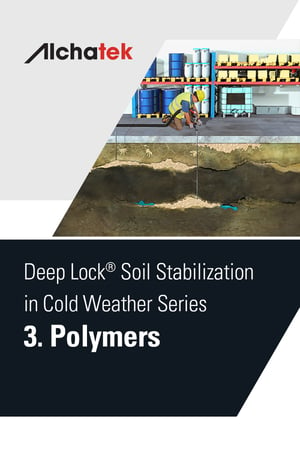
 In the world of soil stabilization and concrete leveling, the choice of materials is as important as the technique used. Alchatek's Deep Lock® process utilizes a range of specialized structural polymers, each designed to cater to specific stabilization needs.
In the world of soil stabilization and concrete leveling, the choice of materials is as important as the technique used. Alchatek's Deep Lock® process utilizes a range of specialized structural polymers, each designed to cater to specific stabilization needs.
Structural Polymers for Deep Stabilization
Here's an overview of the key polymers used in the Deep Lock® process:
- AP Lift 430:
This polyurethane foam is adequate for the vast majority of deep soil stabilization jobs. AP Lift 430 is known for its versatility and reliability, making it a go-to choice for standard deep stabilization tasks. It provides a strong, stable, and durable solution for most soil types and conditions. - AP Lift 440:
AP Lift 440 is formulated for jobs where the soil supports structures larger than a single-story house. This foam supports a bit more weight compared to AP Lift 430, making it suitable for heavier and more demanding applications. It's ideal for projects that require additional strength and stability, particularly in supporting larger buildings or heavier structures. - AP Deep Lift 420:
This is a specialized polyurethane foam used in scenarios where a slight lift is required along with deep soil stabilization. AP Deep Lift 420 is designed to offer slight lifting, soil stabilization, and void-filling capabilities, making it an excellent choice for projects where minor elevation adjustments are necessary along with stabilization. Its unique formulation allows it to address both settlement issues and provide additional support to the foundation or structure.
Technical Support for Product Selection:
Choosing the right polyurethane foam for a specific project can be a complex decision. Alchatek’s technical team is available to assist contractors in selecting the most suitable product for their specific needs. With in-depth knowledge of each product’s properties and the varying demands of different stabilization scenarios, the tech team can provide valuable guidance. This ensures that the chosen foam perfectly aligns with the project requirements, soil conditions, and the desired outcome.


